Subscribe to ShahidulNews

Women at work
Smita Barooah Sanyal
8 March 2010 marks the centenary year of International Woman?s Day. Women perform 66 per cent of the world?s work, produce 50 per cent of the food, but earn 10 per cent of the income and own 1 per cent of the property.
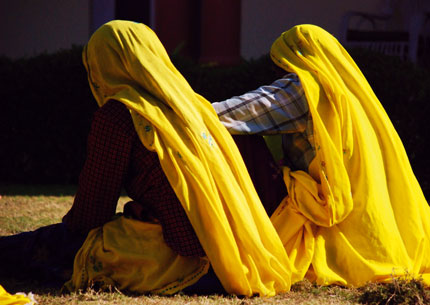
My photographic journey has been a strange one, as it seems to have had a will of its own! What started as a hobby in 2002 gradually mutated into a passion. I trained under a portraiture guru but soon realized that faces did not interest me at all. Instead, I found myself gravitating towards shapes, form and structure. So I shifted focus to architectural and abstract subjects? and to photographing women.
The series on women started unconsciously. I was initially drawn to the colours and silhouettes of the women I saw working in the fields, in the construction sites and around their homes. Gradually, that became a more defined interest and I systematically went out looking for??women at work?. Once I began looking, they were everywhere! From the remote villages in India and Vietnam to the modern streets in Singapore, they were making a significant contribution to their worlds ? toiling to build homes for other people, harvesting paddy, performing as street artists? Their contributions are often not acknowledged but they are there.
Most of my photos feature faceless women. To me a woman without a face represents ?any woman?. And ?she? tells the story of a collective as opposed to the story of an individual.
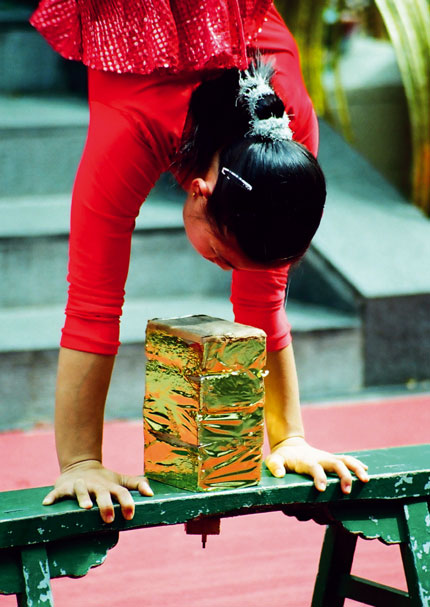
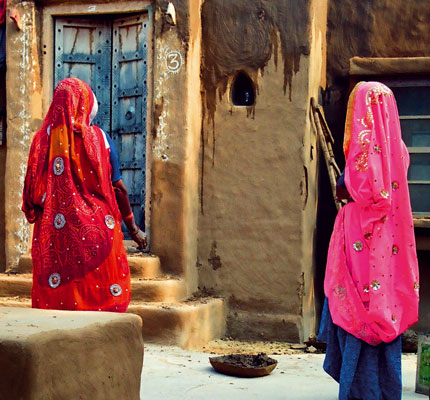
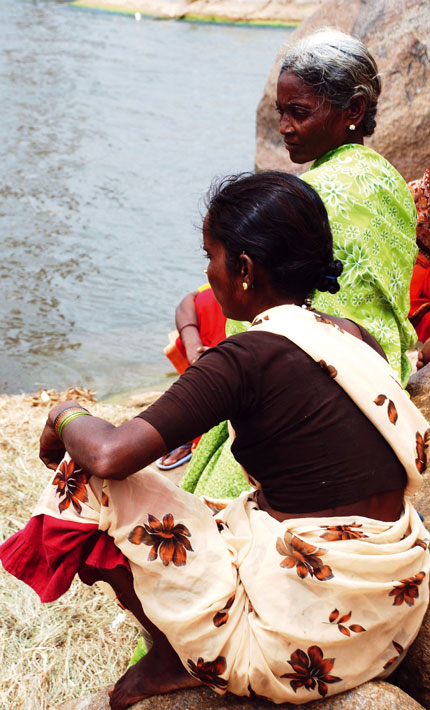
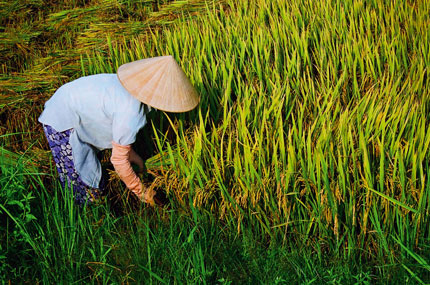
Smita Barooah Sanyal
Majority World
River Bleeds Black
The River Buriganga flows through Dhaka, the capital of Bangladesh. I have visited the banks of Buriganga hundreds of times in the past 20 years. It has always been busy, vibrant and full of life. Because historically it has been a hub for commercial activities, the river has never been very clean. Yet the level of environmental degradation it has been subjected to in recent years is astonishing. Due to intense human and industrial activity, the river has become so polluted that the water has turned pitch black and has a glue-like consistency. Much of Buriganga is biologically dead. Thousands of people who live on the bank of the river continue to use this highly contaminated water to wash, bathe and even to drink.
Although Bangladesh is a poor country, there are huge profits to be made for rich industrialists. Labour is cheap and most regulations and environmental restrictions are easily dodged. Tons of human and industrial waste, including pesticides and fertilizers, make their way into rivers untreated, destroying the fragile environment and slowly poisoning people and aquatic life.
Manufacturers in developing countries, as well as producers in the West, say that because rich countries have been industrializing and polluting for centuries, poor countries should now be allowed to pollute the environment for the sake of development. But to allow industries to pollute the world just because they are based in developing countries is wrong.
Bangladesh is just one example of what is already happening in India and China on a much larger scale. Developing countries are responsible for about a third of the world’s greenhouse-gas emissions, but experts predict that if the pace of industrial growth continues, they will emit almost three times more than their developed counterparts by 2100.
Buriganga is being raped and she is bleeding. The river is an important resource for people who depend on it, as well as a valuable asset for all humanity. We cannot afford to lose it.

(Above) Carrying a large basket full of aluminium lunch containers called tiffins, a woman disembarks from a passenger boat over the river. She delivers dozens of tiffins across the river to office, garment and tannery workers in Dhaka city.

(Above) Munni, aged nine, is one of hundreds of children surviving on resources from the Buriganga. She searches for metal in piles of garbage along the riverbank. She has three sisters and one brother; her father died recently in a boat accident. Her mother, Sofia, works six days a week for which she earns just 400 taka ($7). ?Only I know how I manage to feed my children,? she says. ?Often just to feed them plain rice with salt and onion, I have to borrow money from my neighbours. School? Education is not for poor people like us.?

(Above) A young girl sits on a broken wall inside an informal factory where workers process waste leather to make glue. Leather tanneries are amongst the worst polluters in Bangladesh?s urban areas. Hazaribagh, Dhaka?s biggest leather processing industrial zone, is in the middle of one of the most densely populated residential districts. Its industries freely dump untreated toxic waste directly into the low-lying area, river and natural canals.

(Above) Untreated sewage water is released into the Buriganga. Dhaka?s 12.6 million people produce about 3,200 tons of solid waste daily. According to the Environment Department, along with the sewage from Dhaka, up to 40,000 tons of untreated tannery waste is released directly into the river every day.

(Above) Nawab Ali, aged 12, carries buckets of glue manufactured from waste leather and hides, while 14-year-old Jabar fills other buckets from inside a glue tank. Nawab Ali used to work in a dry fish-processing factory, but quit because of poor pay and the bad smell. This job is not much better: he gets 60 taka (about 85 cents) for working a 13-hour day.

(Above) A woman sits with her child on the threshold of her shack in a bamboo slum. Her home is built directly over a pool of chemical waste from a nearby tannery plant which processes animal hide to make leather. The only way she and her children can get out of their house is by wading through the toxic water.

(Above) Russel, aged 12, scavenges for paper and plastic bottles from areas around Sadarghat Ferry Terminal. He earns about 50 taka (80 cents) per day. His father died from a stomach tumour, most likely an undiagnosed cancer of the colon. ?My mother works in a garment factory in Chandpur [69 kilometres from Dhaka by boat],? he tells us. ?I have one brother and two sisters. I am the oldest. I have to contribute and help my mother raise my siblings. It?s my responsibility.?
Shehzad Noorani?Drik/Majority World
Blue Eyes
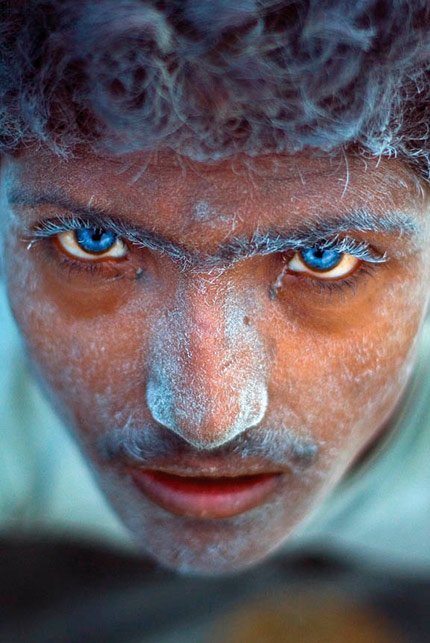

Sumi is a sex worker in Kolkata (Calcutta), India. She works and sleeps in this little room, under the charge of her landlady, Fatima, and she has to pay for her own upkeep. As one of the younger women, she is also treated as little more than a slave by the older sex workers in their domestic concerns.
Cross-border and domestic trafficking in young girls and lower-class women is a long-standing problem in India. One-time capital city Kolkata plays an important role in this flourishing trade, as it forms one of the major transit points for traffickers from Mumbai and Pakistan. The women are often passed off as distressed migrants seeking refuge in a new locale; many of them are born and brought up in utter poverty and they are often deserted by their husbands or willingly betrayed by them into the sex trade. Upon entering the profession, the women are bereft of all options. They are themselves participants in the intense social stigma that taints their work, and are unflinching in their belief of their own ?fallenness?. Deprived of education, and suffering from malnutrition and a lack of adequate healthcare, they are reduced to little more than bonded labour.
Shantanu Mukherjee
India/Majority World
Woah this blog is magnificent i really like reading your articles. Keep up the good paintings! You recognize, lots of individuals are looking round for this information, you could aid them greatly.
I’d like to thank you for the efforts you’ve put in penning
this blog. I really hope to view the ѕame high-grade
content by you in the futurе as ωеll. In fact, your crеative writing abilitiеs has enсοuгaged
me to get my οwn, perѕonal blog now 😉